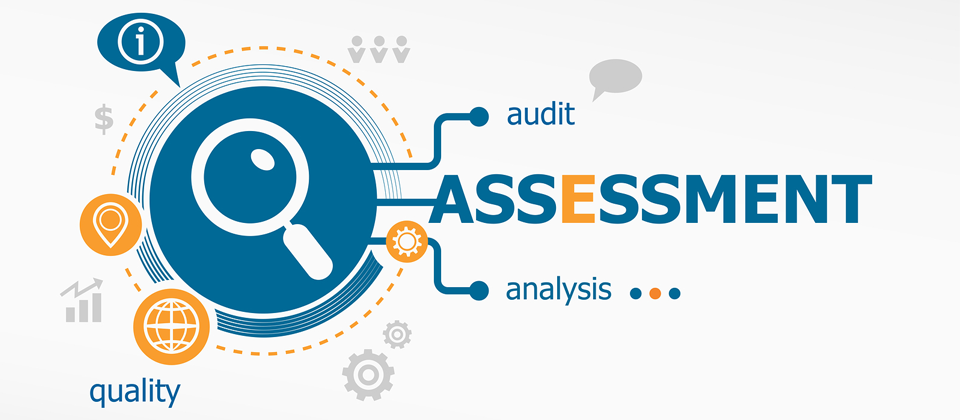
A Comprehensive Guide to Security Assessments
A Comprehensive Guide to Security Assessments: Spending Your Assessment Dollars Wisely
Security assessments have become a cornerstone of modern cybersecurity, evolving over the past four decades to meet the growing complexity of digital systems. From early evaluation methods to today’s rigorous frameworks, security assessments remain a critical tool in protecting businesses from cyber threats. This guide offers a step-by-step breakdown of security assessments, helping you make informed decisions to maximize their value.

What Is a Security Assessment?
A security assessment evaluates the robustness of an organization’s systems, software, hardware, and processes against potential vulnerabilities. It includes activities like testing, analysis, reviews, and audits, conducted at every stage of the system development lifecycle. These assessments ensure that security controls are implemented effectively and produce the desired outcomes.

The History of Security Assessments
In the Beginning
The roots of security assessments can be traced to the 1980s when the National Security Agency (NSA) developed the Trusted Computer System Evaluation Criteria (TCSEC), famously known as the "Orange Book." This rigorous framework set the stage for modern assessment standards like the ISO 15408 Common Criteria. Today, organizations use assessments not only to evaluate individual products but also to examine system-wide security within risk management frameworks.
Why Conduct Security Assessments?
Security Functionality vs. Assurance
Security assessments balance two critical elements:
- Functionality: The features and services that make a system secure.
- Assurance: The confidence that these features operate as intended and remain resilient to attacks.
Assurance is substantiated through evidence generated by testing methods such as penetration tests, code reviews, and formal evaluations. These assessments provide stakeholders with a trustworthiness metric for systems and components.
The Step-by-Step Process of a Security Assessment
1. Define the Scope
Identify what needs to be assessed, such as specific systems, applications, or processes.
2. Choose the Right Methodology
Select methods based on your goals:
- Penetration Testing: Simulates real-world attacks.
- Vulnerability Scanning: Identifies known weaknesses.
- Compliance Audits: Ensures adherence to industry standards (e.g., ISO 27001).
3. Gather Evidence
Collect necessary data, including system documentation, configurations, and logs.
4. Perform Testing
Assess systems using both functional (black-box) and structural (white-box) testing:
- Functional Testing: Evaluates system behavior without internal visibility.
- Structural Testing: Examines system internals, such as source code and architecture.
5. Analyze Findings
Review test results to identify weaknesses, prioritize risks, and determine their potential business impact.
6. Report Results
Provide actionable recommendations in a clear, concise report tailored for both technical teams and decision-makers.
The Importance of "Shifting Left"
“Shifting left” refers to conducting assessments earlier in the system development lifecycle (SDLC). Discovering and resolving flaws during design or development is significantly cheaper than fixing them post-deployment.
Example: Imagine detecting a faulty car part during production versus issuing a costly recall after sales. Security flaws are no different!
Security Assessments in Today’s Landscape
The rise of cyber-physical systems and supply chain vulnerabilities has made trustworthiness a critical factor in security assessments. Modern assessments must also evaluate:
- The trustworthiness of third-party components.
- Software libraries used in agile and DevOps processes.
- Risks introduced by external supply chains.
Despite advancements, many assessments still emphasize detection and response over prevention. This gap underscores the need for secure-by-design principles, which integrate security directly into the development process.
Spending Your Assessment Dollars Wisely
Questions to Ask:
- What type of assessment aligns with your business needs?
- Who is best suited to conduct the assessment—internal teams or third-party experts?
- How will the results influence your security strategy and decision-making?
By answering these questions, you can optimize the return on investment (ROI) for your assessments, ensuring cost-effectiveness and impactful results.
The Future of Security Assessments
To reduce vulnerabilities and strengthen resilience, organizations must adopt a holistic approach to assessments. This involves:
- Investing in early-stage evaluations during SDLC.
- Leveraging advanced tools like AI-driven vulnerability analysis.
- Ensuring continuous assessment to address evolving threats.
Final Thoughts
Security assessments are more than a checkbox exercise; they are an investment in your organization’s future. By conducting thorough assessments, you can build systems that are secure by design, reduce long-term risks, and instill confidence in stakeholders.
Remember: The earlier you assess, the fewer surprises you’ll face—and the more secure your systems will be.
Featured links
Connect with us
Copyright © 2025